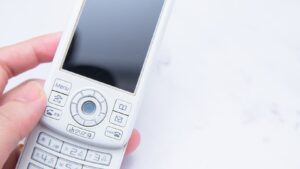At the dawn of the 21st century, the mobile phone landscape began an evolution that would redefine personal communication. The early 2000s marked a pivotal era, introducing devices that were more than just tools for making calls; they were symbols of status, innovation, and the burgeoning digital age. This period saw the emergence of iconic models that blended functionality with style, setting the stage for the smartphone revolution.
Early 2000s Phones
 Early 2000s phones marked a transformative period in mobile technology and culture. These devices evolved from mere communication tools to cherished personal gadgets, reflecting one’s style and technological preference. Iconic models from this era introduced design innovations such as flip and slide mechanisms, integrating cameras, and offering limited internet access, which set the stage for the smartphone era. Brands like Nokia, Motorola, and Samsung led the market, releasing phones that not only served practical functions but also became fashion statements. As these early 2000s phones bridged the gap between functionality and form, they laid the groundwork for the feature-rich smartphones that dominate today’s market.
Early 2000s phones marked a transformative period in mobile technology and culture. These devices evolved from mere communication tools to cherished personal gadgets, reflecting one’s style and technological preference. Iconic models from this era introduced design innovations such as flip and slide mechanisms, integrating cameras, and offering limited internet access, which set the stage for the smartphone era. Brands like Nokia, Motorola, and Samsung led the market, releasing phones that not only served practical functions but also became fashion statements. As these early 2000s phones bridged the gap between functionality and form, they laid the groundwork for the feature-rich smartphones that dominate today’s market.
Iconic Early 2000s Phones That Defined a Generation
Early 2000s phones marked a distinctive era in mobile technology, transitioning from the bulky, functional devices of the late 90s to sleek, feature-packed gadgets.
Nokia 3310: The Indestructible Legend
The Nokia 3310, launched in 2000, quickly became the quintessence of durability and reliability, earning the title of “The Indestructible Legend.” This early 2000s phone was renowned for its sturdy build, capable of surviving numerous drops and mishaps, a testament to its design and construction. Its long battery life and user-friendly interface made it an instant favorite among users of all ages.
Featuring games like “Snake II,” customizable ringtones, and interchangeable covers, the Nokia 3310 offered a level of personalization that appealed to the youth market. Its simplicity, coupled with these entertainment features, positioned it as a leader in the mobile phone market, selling over 126 million units globally. The Nokia 3310 stood as a benchmark for quality and reliability, setting high standards for subsequent mobile devices.
Motorola Razr V3: The Fashion Statement
 In 2004, the Motorola Razr V3 redefined what a mobile phone could be with its ultra-thin profile and elegant design, turning it into a veritable fashion statement. Its sleek, clamshell body, crafted from aircraft-grade aluminum, showcased Motorola’s commitment to innovation in design and material use in early 2000s phones. This model boasted a vibrant color screen, a VGA camera, and Bluetooth connectivity, features that were cutting-edge at the time.
In 2004, the Motorola Razr V3 redefined what a mobile phone could be with its ultra-thin profile and elegant design, turning it into a veritable fashion statement. Its sleek, clamshell body, crafted from aircraft-grade aluminum, showcased Motorola’s commitment to innovation in design and material use in early 2000s phones. This model boasted a vibrant color screen, a VGA camera, and Bluetooth connectivity, features that were cutting-edge at the time.
The Razr V3’s emphasis on style without sacrificing functionality captured the imagination of the public, making it one of the most coveted phones of the early 2000s. It not only appealed to the tech-savvy and fashion-conscious consumers but also significantly influenced the design of future mobile devices. With sales exceeding 130 million units, the Motorola Razr V3 remains one of the best-selling flip phones of all time, emblematic of the era’s fusion of technology and fashion.
Technological Innovations of The Time
The early 2000s phones introduced groundbreaking features, setting the stage for the smartphones of today. They incorporated multimedia capabilities, like the ability to play music and videos, which were unheard of in previous models. Cameras became a standard feature, transforming phone usage from mere communication to capturing moments. Internet connectivity marked a significant leap forward, offering users access to the web, email, and later, social media platforms. Bluetooth technology also made its debut, enabling wireless connections between devices for the first time. These innovations distinguished early 2000s phones as pioneers in mobile technology.
Design and Aesthetics: A Retrospective
In the realm of early 2000s phones, design and aesthetics played pivotal roles in distinguishing models. These devices moved beyond mere functionality, embracing sleek forms and unique features that reflected emerging trends and consumer desires. Icons like the Nokia 3310 and Motorola Razr V3 exemplified this shift, boasting not only durability and user-friendly interfaces but also styles that made them instantly recognizable. The Nokia 3310 offered a robust, compact design with interchangeable covers, allowing customization that appealed to a wide audience. Meanwhile, the Motorola Razr V3 set a new standard for slimness, featuring a clamshell design that combined elegance with technology.

